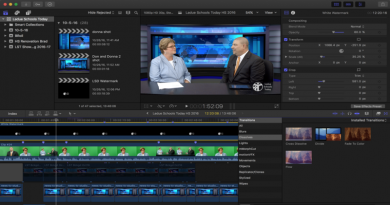5 Tips To Help Guide You As You Plan For The Year Ahead In Your Classroom — Whatever That Looks Like

Over the last 22 years of advising publications I’ve gotten pretty used to a nice routine and plan for the year ahead. While the details all change from year to year and there are things I obviously can’t foresee, much of the scripting, deadlines and plans play out in a similar and familiar way.
As I sit here preparing for the year ahead, I realize the gameplan I’ve worked to perfect and rely upon needs to be thrown out the window. It hit me a few weeks ago that if I tried to plan the year ahead like I had all the others, I would likely be setting myself and the staffs up for a messy year of adjustments and added stress.
Maybe this year will play out like all the others and I’m overthinking things. However, I decided I’d err on the side of caution as I start to put plans in place and talk with my editors, to set them up for a year that can still be super productive and rewarding, but less stressful than the situations they found themselves in last spring.
I don’t have all my planning done yet by any means, but I have settled on five points that are helping keep me centered and that are helping drive my decisions.
1- Simplify. Simplify. Simplify.
Each year, I’m the king of changing things and adding elements into the mix to help my students and the program grow. I love casting a wide, large net and seeing what sticks. This summer, I’m pulling that way back and using a butterfly net and reminding myself daily to simplify. I usually don’t keep myself in check like this, but if I learned anything from spring it’s that for their sanity (and mine) I need to simplify what’s going on. Nothing’s off the table here from fewer newspapers published during the year to a MUCH slimmed down set of offerings students can choose from on their Rule of 3 form.
2 – Focus More Resources on the Web
If you’ve already got all of your resources working for the web, you’re ahead of the game. If not, this a great opportunity to get all students in the program, from photographers to yearbook staffers, publishing work monthly to the website. With things changing so rapidly from school policies and procedures to breaking news in our communities, this is a great opportunity for your student news site to be a leader for your school community to keep them informed. Don’t have a website? Contact SNO and get one setup.
3 – Develop a Strong Plan for Social Media
Keeping along the same lines as point #2, it’s critical your staff has a strong social media presence this year to keep students informed on changes and news as it breaks. Social media and the website are also places that can help keep the school community connected during this time when many are feeling isolated. At the end of last year when learning moved to a virtual space, Drake University School of Journalism and Mass Communication (@DrakeJMC) gave shout out posts on Instagram to each of the graduating students in their program. They’ve continued this summer highlighting students by giving incoming freshmen to the program their own individual posts. They are nice, mini profiles that remind me of Humans of New York and would be very easy for high school staffs to replicate.
4 – Plan for Back and Forth
I have been working to make decisions based on things that could work at school or home if we are moved to a virtual environment. I don’t want us to start in one place and then get moved to another space and have to reinvent the wheel on the rest of the year ahead. In a perfect world, this stuff is all going to work if we see-saw back and forth between school and home. I’m working to exclude things that can only be done at school like livestreaming with our big setup to creating assignments that can only be done in the portrait studio. Failure to plan like this will likely cause a lot of added stress on everyone if adjustments have to be made.
5 – Work With Accessible Tools and Technology
If you’ve been meaning to teach students how to use their mobile devices more, this is the year to go all in. With potentially needing to clean or quarantine school cameras after each use, we are all probably smartest if we work to teach students how to get the most out of the mobile devices they have in their possession daily, from getting them to take photos and scheduling social posts to recording podcasts and editing videos. Work to cater assignments to these devices and offer training in each to help students be successful. That training can be something you create or content that’s already on the web. Don’t forget, we have tons of resources on this site for you and you can find more in the JEA Curriculum. Yes, the work with mobile may not look exactly like what had been produced before, but if there’s a year to be flexible and creative and innovative…it’s this year.
As I get closer to our first days of school in late August, I’ll be sharing what I come up with based on these guiding principles for the decisions I’m making. Members of the JEA Digital Media Committee will be doing the same. We also would love to encourage you to share anything digital media related that you’re doing in the effort that it might help someone out. If you’re interested in sharing, reach out and let me know.
Best of luck on the year ahead and don’t forget to simplify.





